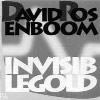You never knew you loved... Getting into biomusic
For some, however, there is a unique middle ground wherein science is often the necessary route to natural expression: Biomusic.
There are many subgenres of biomusic that focus on human, animal, and even plant-based expression. The most arguably common form is made up of bird or whale songs, either arranged or left in their raw form and put to music. More avant-guarde forms include animals who sing on command, or even walk across sheet music with painted paws to “write down” compositions.
The uncommon subgenre of plant biomusic is created by measuring electrical currents in plants and interpreting their fluctuations as sound, which is then arranged as music.
On the human end, a common form is neurofeedback, which uses an electoencephalophone to read brainwaves and put them to music. The technology was initially developed in the 1960s and has been improved and expanded since then.
The resulting music can almost never be classified by conventional pop terms and often falls into the broad category of ambient music. The songs, or, more often, soundscapes, are often more then 10 minutes in length, placing them well beyond the duration of all but the most epic conventional compositions.
Because of its unique nature, biomusic is not always easy to find in local record stores. However, for those willing to look, it is well-worth the search.
 David Rosenboom: David Rosenboom was one of the pioneers of neurofeedback. The patterns measured in the brain range from steady and soothing to obtuse and disjointed, as in On Being Invisible, Part 1, which comes in at just under 24 minutes in length, and appears on the album Invisible Gold, released in 2001.
David Rosenboom: David Rosenboom was one of the pioneers of neurofeedback. The patterns measured in the brain range from steady and soothing to obtuse and disjointed, as in On Being Invisible, Part 1, which comes in at just under 24 minutes in length, and appears on the album Invisible Gold, released in 2001.
Music From the Body: In 1970 a documentary was released with a soundtrack created by the collaboration of Roger Waters (Pink Floyd) and Ron Gessin. Music From the Body, for the film The Body, features a mix of traditional instruments with breathing, whispering, and even farting, among other bodily sounds. More Than Seven Dwarves in Penis Land is a vocal track that defies all North American vocal conventions.













